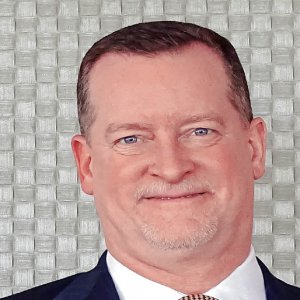Mapping the Mexican Terrain

STORY INLINE POST
Q: What factors led to the extension of ION’s multi-year contract with PEMEX for onshore and offshore surveys?
A: Our biggest achievement to date, however, have been offshore. The recent changes in the regulatory regime in Mexico have created enormous opportunities for E&P companies in Mexico, and ION has been a significant player in getting data into their hands to help them develop their exploration strategies in the region. First, in 2012, we gained access to the University of Texas data in Mexico and reprocessed the seismic data shot in the 1970s and 1980s. The uplift we achieved on that data was remarkable. We named the project YucatanSPANTM, and it enabled our customers to identify key prospective areas ahead of their competitors. In 2015, we acquired 22,000km of new data entitled MexicoSPANTM, and this covers the southern half of the basin and ties directly to our GulfSPANTM program in the US. MexicoSPANTM images the prospectivity of the sedimentary section and also the deepest part of the basin, providing the framework to understand the basin evolution and potential petroleum systems that are present. We believe MexicoSPANTM provides our customers most of the 2D data they need.
Exploration success in the US Gulf of Mexico has been driven by large volumes of multi-client 3D data. The next step for Mexico is to develop prospects by applying the latest geologic knowledge and processing technology to the existing 3D data. Our leading edge imaging technology and significant experience with Mexican geology make us the preferred imaging partner for many new operators in Mexico. We are currently working on a number of projects to deliver continuous high-quality 3D data over large areas in critical regions such as Perdido and Campeche. These data sets will be available in time to reduce geologic risk for the impending lease sales.
Q: What experience gained from your data in the US sector of the Gulf of Mexico will be translated into its Mexican counterpart?
A: Drilling activity in the US has been high, and our GulfSPANTM and FloridaSPANTM programs provide our customers with the data and knowledge they need to develop their E&P programs in Mexico. The level of competition in the US Gulf of Mexico has also driven a tremendous wave of innovation. Our pioneering work to develop and apply Reverse Time Migration (RTM) and other technologies gives us a substantial edge in imaging complex areas such as the salt related discoveries of the Perdido fold belt. In Mexico, the knowledge that we gained from the YucatanSPANTM reprocessing project was invaluable because it allowed us to develop the MexicoSPANTM program with a clear focus on answering the key questions, whereas our competitors had to acquire dense regular grids to sample the geology.
Our unconventional reservoir characterization ResSCANTM workflow was developed over several years of evaluating and characterizing multiple onshore US reservoirs. The integration of the various disciplines, such as geophysics, petrophysics, geomechanics, rock physics, reservoir engineering, drilling, and completion operations, provides the context for our customers to optimize well and field development plans. These workflows can focus on well orientation by using the latest wide-azimuth and multicomponent seismic technology, seismic inversion to identify completion or production sweet spots or azimuthal anisotropy to better understand fracture orientations.
Q: What are the advantages of ION’s BasinSPANTM over conventional multi-client survey libraries?
A: BasinSPANTM programs are designed at the basin scale in order to deliver knowledge across an entire basin, from margin to margin. They are designed and acquired to provide the complete exploration framework and connect conjugate basins, which are basins that formed when the continents were in a different location than today. That means delivering seismic lines that are not just longer than those of our competitors but that also provide the highest quality image of deeper strata at 40km or more. This allows geoscientists to unravel the geologic evolution of the basin. The BasinSPANTM library allows us to make interpretations across entire continental margins, and we can correlate the geology in Brazil to similar age rocks in West Africa, for instance. We tied our Mexican program to the Caribbean region. BasinSPANTM programs are never just regular grids of lines. Each line in a BasinSPANTM program is designed to answer a specific question about the basin architecture. Typically, we shoot orthogonal to the bathymetry and parallel to the syn-rift extension direction. We also take care to tie existing well control. We have acquired or reprocessed over 96,500km of 2D seismic data across the whole Gulf of Mexico as part of BasinSPANTM and complemented that with potential field data. Our coverage extends from Dallas, Texas to the Yucatan peninsula.
Q: What are the benefits of Reverse Time Migration (RTM) in ION’s technology portfolio, what have been its results in exploration activities in the Gulf of Mexico, and what improvements has ION made to this technology?
A: About ten years ago, ION was the first company to commercialize the large-scale use of RTM. It delivered accurate images in the presence of steeply dipping or even overthrust reflectors that are encountered in complex subsalt plays. RTM has continued to evolve, and today we can use much more realistic anisotropic representations of the subsurface. Our implementation of RTM is extremely efficient, allowing us to deliver RTM images at high resolutions, without any of the limitations of traditional Kirchoff migration. ION’s major differentiator is not just our algorithms, but our leading experience in successfully implementing technology for our customers.























